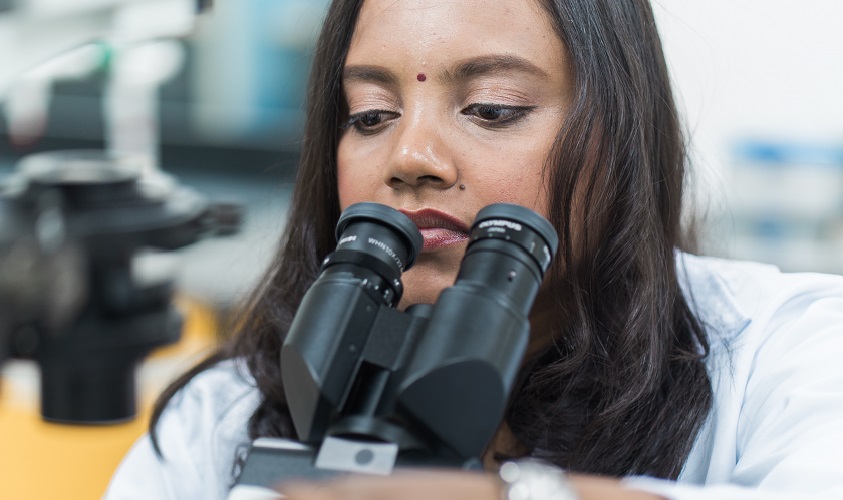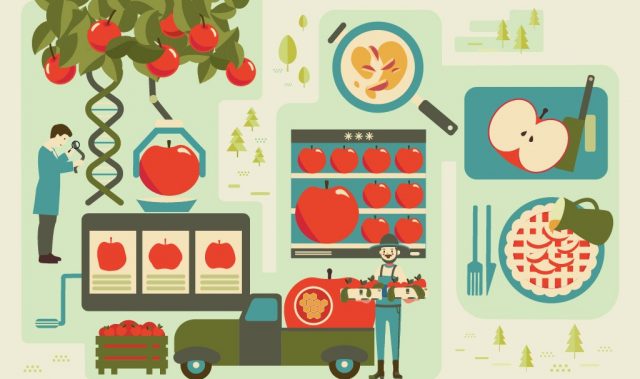
Nethia Mohana Kumaran
Lecturer
School of Biological Sciences
Universiti Sains Malaysia
AsianScientist (July 26, 2017) – Not everyone wears the same-sized shoes, so why should different cancer patients be treated with the same cancer therapy? This is the major bugbear for Dr. Nethia Mohana Kumaran, cancer researcher at the University of Science, Malaysia, and recipient of the 11th L’Oréal-UNESCO For Women In Science fellowship in 2016.
A firm believer in personalized medicine, Kumaran hopes that her work will result in the development of new diagnostics that will help doctors customize cancer treatments for patients suffering from nasopharyngeal cancer (NPC).
- How would you summarize your research in a tweet (140 characters)?
My research focuses on studying the roles of the anti-apoptotic genes Mcl-1 and Bfl-1 in NPC cell survival using the CRISPR/Cas9 technology.
- Describe a completed research project that you are proudest of.
My proudest moment was when my PhD work was published in Clinical Cancer Research. I am also proud of a recent project which we completed. The sensitivity of NPC cells to drugs known as BH3 mimetics were not well explored. Our study showed that NPC cells could be sensitized to ABT-263 (a BH3 mimetic) in combination with other drugs. Interestingly, one of the drugs we used showed a single agent activity on NPC cells. We had one research team express their interest to collaborate and perform in vivo studies with us using the drugs. We are currently working on a grant together. There also other ongoing projects that we are excited about, and we are eagerly awaiting the results from some experiments. The outcomes of these projects could open new avenues for NPC treatment.
- What do you hope to accomplish with your research in the next decade?
I would like to see a paradigm shift in how NPC patients are treated in the future. We have to move from the ‘one-size-fits-all’ kind of treatment to more personalized treatment whereby cancer is treated according to its mutations, using targeted therapy. This way, patients would respond better to treatment and do not suffer from unnecessary side-effects.
I hope that with the work I am currently performing, I would be able to produce companion diagnostics kits which could be easily used to detect specific mutations in NPC. I also hope that the information yielded by such kits would later aid in therapeutic decision making.
- What motivated you to go into your field of study?
I should say that it was my virology lecturer, Associate Professor Dr. Yahya Mat Arip, who first got me interested in the field of cancer biology. His lectures made me understand the mechanisms or pathways involved in the conversion of normal cells into cancer cells.
The motivation to continue to work in this field came from my wonderful mentors, Dr. Tim Bates, who was my mentor when I did my masters of science project, and also Dr. John Allen and Professor Dr. Nikolas Haass who were my PhD project mentors. They not only guided me with my lab work but also trained me to present or articulate my studies well to the scientific community.
- What is the biggest adversity that you experienced in your research?
My colleagues and I would want to start working on NPC biopsy tissues because patient samples would be useful to understand cancer mutations and may lead to new gene discoveries. At the same time, we also want to embark on a pilot project to set up the Malaysia Northern Region NPC Registry. Our biggest hurdle is in obtaining human ethics approval as the application process involves a lot of paper work and waiting time.
- What are the biggest challenges facing the academic research community today, and how can we fix them?
I find that scientists do not collaborate much. As young scientists, we always require the expertise and ideas of other young and senior scientists, but I often find that collaborations are difficult to establish. In order to progress and produce quality work in science, collaboration is a must as we cannot become experts in all the areas that are required to do our work.
- If you had not become a scientist, what would you have become instead?
Maybe a budding artist for movies or a owner of a bookshop which only sells children books, like the one that Meg Ryan owns in the movie You’ve Got Mail.
- Outside of work, what do you do to relax?
I love Indian classical music. Hence, I listen to music and try to learn new songs.
- If you had the power and resources to eradicate any world problem using your research, which one would you solve?
I would spend my resources on technologies that help detect mutations in patients suffering from disease so that appropriate drugs could be administered. I would also make sure that the technologies employed are inexpensive so that people from all walks of life could benefit from it.
- What advice would you give to aspiring researchers in Asia?
Be focused on your aims, but do not forget to have fun at the same time.

This article is from a monthly series called Asia’s Rising Scientists. Click here to read other articles in the series.
———
Copyright: Asian Scientist Magazine; Photos: Nethia Mohana Kumaran.
Disclaimer: This article does not necessarily reflect the views of AsianScientist or its staff.













